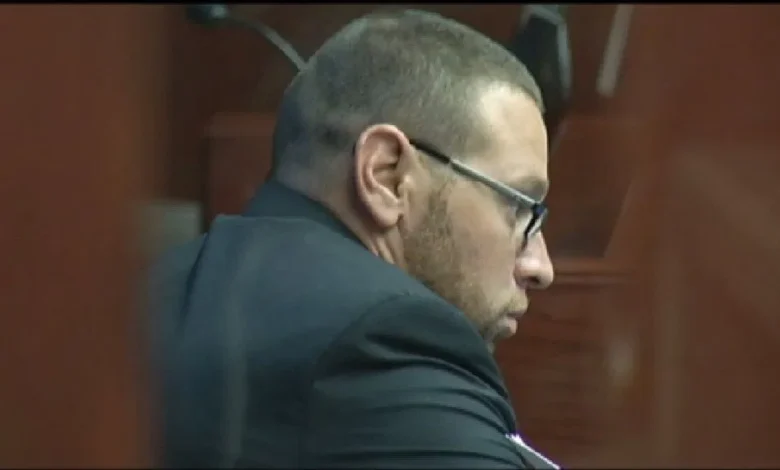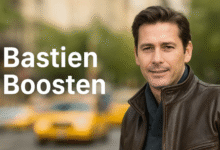Daniel Villegas – A Story of Injustice, Resilience, and Redemption

The story of Daniel Villegas is one of the most haunting and emotional cases of wrongful conviction in recent American history. At the age of just 16, Villegas was convicted of a double homicide he did not commit. What followed was a harrowing journey through the criminal justice system that lasted more than two decades. His eventual release and exoneration serve not only as a testament to human endurance but also as a glaring example of the flaws that persist within the legal system.
This article delves into the case of Daniel Villegas, exploring how a false confession led to years of imprisonment, the legal battles that ensued, and the ultimate triumph of truth. His story has become a symbol of both the perils of coerced confessions and the power of perseverance in the face of overwhelming adversity.
The Night That Changed Everything
The 1993 Drive-By Shooting
On the night of April 10, 1993, a drive-by shooting rocked the northeast side of El Paso, Texas. Two teenagers, Robert England and Armando “Mando” Lazo, were gunned down as they walked home from a party. The attack was sudden and senseless, and it sent shockwaves throughout the local community. With few leads and mounting public pressure, police were eager to find the culprits.
The Investigation Takes a Turn
In the weeks following the murders, the El Paso Police Department began rounding up local teenagers, looking for anyone who might know something—or could be coerced into giving information. Daniel Villegas, who had a minor history with law enforcement, was among those questioned. He was just 16 years old and came from a working-class Hispanic family, making him an easy target for a system more concerned with quick results than due process.
The Coerced Confession
Interrogation Without Legal Counsel
Daniel Villegas was taken into custody and interrogated for hours without a lawyer or parent present. Investigators used intense psychological pressure, a common tactic in cases involving young suspects. Eventually, Villegas broke. In a written confession, he admitted to the crime—but later recanted, saying he had confessed only because he was terrified and confused.
Despite the glaring issues surrounding the interrogation, prosecutors used the confession as the backbone of their case. There was no physical evidence linking Villegas to the crime scene. There were no reliable eyewitnesses. And yet, that single document sealed his fate.
The First Trial and Mistrial
Villegas’s first trial in 1994 ended in a mistrial, as jurors could not agree on a verdict. However, rather than abandoning a shaky case, prosecutors doubled down. In a second trial in 1995, they again presented the coerced confession, and this time a jury found Daniel Villegas guilty. He was sentenced to life in prison.
Life Behind Bars
Adolescence Lost
For the next 18 years, Villegas lived behind bars. He missed his teenage years, his early adulthood, and countless family milestones. Still, he never gave up on proclaiming his innocence. He read about law, worked with advocates, and wrote letters to anyone who would listen. His unwavering determination eventually caught the attention of a defense attorney named Joe Spencer and a local private investigator.
New Hope on the Horizon
With Spencer’s help, a renewed legal effort began in the late 2000s. They uncovered a series of missteps and prosecutorial misconduct from the original trial. Several witnesses admitted they had been pressured into testifying falsely. New evidence showed that Villegas had a solid alibi. The foundation of the prosecution’s case—his confession—was dismantled piece by piece.
The Path to Exoneration
Habeas Corpus Petition and Release
In 2011, Spencer filed a habeas corpus petition, arguing that Villegas’s constitutional rights had been violated. The judge agreed, ruling that the confession had been coerced and that Villegas deserved a new trial. After nearly two decades in prison, Daniel Villegas was released on bond in October 2011.
The emotional moment was captured by media outlets: Villegas, now a man in his 30s, walked free, greeted by his family and supporters. It was a powerful scene—one that illustrated both the pain of the past and the hope for a better future.
The Final Verdict: Not Guilty
In 2018, Daniel Villegas stood trial once more. But this time, the narrative had changed. The confession was seen in the light of coercion. The alibi was corroborated. The inconsistencies in the original case were impossible to ignore. On October 5, 2018, the jury delivered a verdict: not guilty.
Tears flowed freely in the courtroom. For Villegas and his family, it was a moment of justice long overdue.
The Aftermath and Impact
Life After Exoneration
Adjusting to life outside prison has been both joyous and challenging for Villegas. After spending most of his life behind bars, he had to relearn basic social interactions, technology, and daily routines. But he did so with the same determination that sustained him during his imprisonment.
Today, he is an advocate for criminal justice reform. He shares his story at events and conferences, speaking about the dangers of coerced confessions and the importance of legal representation—especially for minors.
Legislative and Public Response
Daniel Villegas’s case has had ripple effects far beyond El Paso. It has inspired renewed scrutiny of interrogation techniques, particularly when dealing with juveniles. Legal scholars, civil rights groups, and legislators have cited the case in calls for reform.
In Texas and other states, new policies have been proposed to require video recordings of all interrogations, to limit the time minors can be questioned without a guardian present, and to train officers in trauma-informed interviewing.
The Power of Perseverance and Community
A Case Study in Resilience
What sets the story of Daniel Villegas apart is not just the miscarriage of justice—it’s the strength he demonstrated throughout the ordeal. Villegas could have been consumed by bitterness, but instead, he chose purpose. He turned his personal tragedy into a platform for change.
His family also played a crucial role, never wavering in their belief in his innocence. They fought for him at every stage, raising awareness and gathering support even when it seemed like no one else was listening.
How the Community Rallied
Villegas’s exoneration would not have been possible without a network of dedicated supporters—journalists, activists, lawyers, and friends. Social media campaigns helped bring national attention to the case. Fundraisers helped cover legal costs. And local residents of El Paso began to question the justice system that had failed one of their own.
Why the Case Still Matters Today
The wrongful conviction of Daniel Villegas is not an isolated incident. According to the National Registry of Exonerations, hundreds of people have been exonerated after years—or even decades—of imprisonment due to false confessions, eyewitness misidentification, and prosecutorial misconduct.
Villegas’s story is a reminder that justice is not always automatic. It requires vigilance, advocacy, and reform. It shows that one voice, even when silenced behind prison walls, can echo far enough to create meaningful change.
Conclusion
The story of Daniel Villegas is a cautionary tale about the dangers of coercive interrogation and a broken justice system—but it is also a story of courage, community, and the enduring human spirit. From being a frightened teenager falsely accused of murder to a symbol of justice reform and resilience, Villegas has emerged as a powerful voice for change.
His exoneration shines a light on the importance of truth, legal integrity, and the right to a fair trial. But more than anything, it underscores the idea that no matter how long it takes, justice is worth fighting for.
FAQs
How long was Daniel Villegas in prison?
Daniel Villegas spent nearly 18 years in prison before being released in 2011 and exonerated in 2018.
Why was Daniel Villegas wrongfully convicted?
He was convicted based on a coerced confession during an intense police interrogation when he was just 16, without any physical evidence linking him to the crime.
What happened to the original case against him?
The case was overturned after new evidence, and witness recantations proved the original trial was flawed. He was eventually found not guilty in a retrial.
What is Daniel Villegas doing now?
He is an advocate for criminal justice reform, public speaker, and community activist focused on preventing wrongful convictions.
What reforms has his case inspired?
His story has led to discussions about mandatory video recordings of interrogations, protections for minors during questioning, and broader criminal justice reform initiatives.





